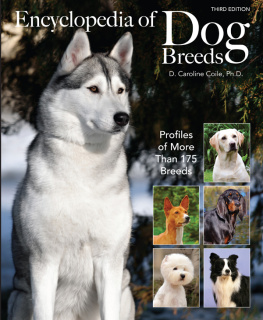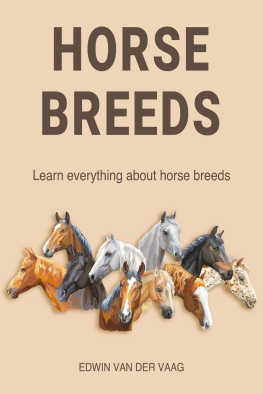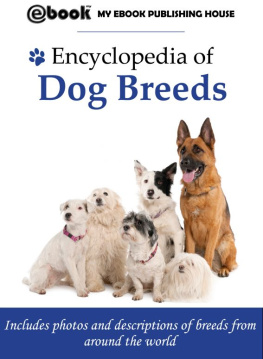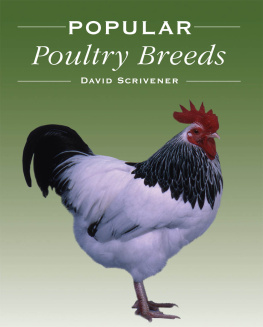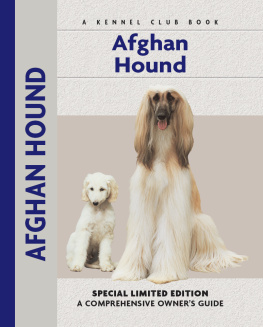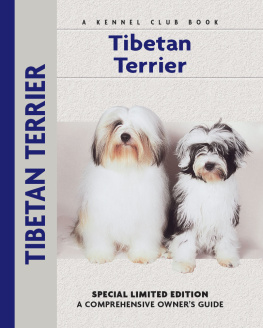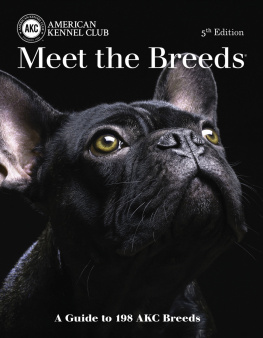
COVER CREDITS
Front Cover
Main photo : .
PHOTO CREDITS
123rf : .
Copyright 2015, 2005, 1998 by Barrons Educational Series, Inc.
All rights reserved.
No part of this book may be reproduced or distributed in any form or
by any means without the written permission of the copyright owner.
All inquiries should be addressed to:
Barrons Educational Series, Inc.
250 Wireless Boulevard
Hauppauge, NY 11788
www.barronseduc.com
eISBN: 978-1-4380-6792-6
CONTENTS
PROFILES OF THE BREEDS
APPENDIX
You can choose your friends, but you cant choose your familyexcept, of course, for the family dog. In fact, humans have been choosing the dogs family for it for thousands of years, since the first time an arranged breeding between dogs with favored characteristics was carried out in an effort to produce more dogs of the same. In so doing, they gradually created from wolf ancestors the most diverse species in the world: Canis familiaris , the domestic dog.
The circumstances of the dogs initial domestication are forever lost in time. Early in the course of domestication, selection for traits that enabled this formerly wild species to share its life with humans was molding the dog that is such an integral part of human life today. Traits such as lack of fear, low reactivity, and dependence helped the first domestic dogs to live among members of another species.
As humans came to realize that like begat like, they purposefully bred their best hunting dogs together, and their best guarding dogs together, creating the first canine specialists. Even in prehistoric times, considerable diversity in dogs existed, with distinct types or familiesbreedsof domestic dogs arising at least by 3000 to 4000 years ago. Ancient Egypt was home to at least two distinct types of dogs, Greyhound and Mastiff, each specialized for a different job. By Roman times, most of the main types of modern breeds were in existence, with dogs specifically bred as guard, sheep, hunting, and lap dogs. The variety of dog breeds expanded greatly in Europe in the Middle Ages, with many breeds taking on importance as specialized hunters for either the aristocracy or poachers. Europe was not the only home of new dog breeds. Wherever humans lived, they shaped their dogs to do their bidding. Just as the needs of people change throughout history, breeds of dogs are not static. Many breeds have been born only to disappear into history, lost either because their work was no longer needed or another breed was developed that could do it better.
In the mid 1800s, a new pastime caught the attention of the European upper class: the exhibition of dogs. Before this time, it had been common to arrange contests between dogs based on coursing, fighting, or hauling ability, but the idea that any dogs worth could be estimated by its physical appearance was relatively new. As competition among breeds grew, the search for new and exotic breeds began. Travelers and dog buyers would spot prospective breed candidates, acquire a few, and exhibit them.
Dog shows spread quickly to America, where the American Kennel Club (AKC) was formed to register and promote pure-bred dogs. The requirements for breed recognition have changed somewhat through the years, but in general a breed must be backed by a national club that can demonstrate a sustained interest in the breed. New breeds are initially admitted into the Miscellaneous Class, and then later, pending demonstration of continued interest in the breed, admitted into one of the AKCs seven regular groups. The AKC breeds represent only a fraction of the worlds breeds, but they are the most popular dogs in America.
Every breed of dog can be good with children if raised with them the right way, and every breed can be bad with children if not adequately socialized with them. Sometimes a breeds job affects its interaction with children. Some herding breeds herd anything, including children, often by nipping. Some guarding breeds are protective of the children in their family, even against a roughhousing friend.
A large dog can accidentally topple a small child, and they have large teeth and powerful jaws that do more damage if they bite. Small dogs can be hurt by children.
Excitable dogs may become overly excited by the activity of children. Boisterous dogs can jump on children in play or simply annoy parents by adding to the household activity level. Inactive dogs are more likely to ignore children and perhaps even leave the room. Though they may help keep excitement levels down in the home, they may not be satisfying for children needing a playmate.
Independent dogs can be frustrating for children and may themselves be endangered by living with a child. Children may have difficulty taking an independent dog for a walk because it may wander away in search of adventure or game. Active, independent dogs may tend to run through gates and doors that children may inadvertently leave open. Playful, obedient, gentle, middle-sized dogs tend to make the best dogs for children.
The profiles are designed not only to inform you about a breed but also to provide information that will help you choose your best of breeds. Each profile is divided into several sections.
Popularity Breeds are ranked according to the AKC registration statistics at the time of writing, and are described as Most popular (AKC rank 110); Very popular (1125); Popular (2645); Somewhat popular (4675); Somewhat uncomon (76100); Uncommon (101130); Rare (131150); and Very rare (151 and above). Current rankings can be found at www.akc.org . These rankings underestimate the popularity of breeds that are primarily registered with non-AKC registries. Coonhounds, American Staffordshire Terriers, American Eskimo Dogs, and Rat Terriers, for example, are more heavily registered with the United Kennel Club (UKC); retired racing Greyhounds with the National Greyhound Association; and Foxhounds and many hunting breeds with various field organizations. More popular dogs are easier to locate, while very rare breeds may be in danger of extinction.
Family Many breeds belong to groupings of breeds associated by relationship or function.
Area of Origin The generally agreed-upon country or region in which a breed originated.
Date of Origin The approximate date at which a breed began to be recognized as distinct from other breeds.
Original Function Early uses for a breed.
Todays Functions Todays breed-specific uses and competitions. All breeds can participate in conformation shows, obedience trials, agility trials, tracking tests, and as therapy dogs. However, this is only mentioned if a breed is extraordinary in one of these functions.
Height and weight are the suggested values given in the AKC standards. Height is measured as the distance from the ground to the top of the withers. Those with an asterisk (*) indicate that no requirement was listed in the standard; these measurements are average reported values. Note that in any case, average values within a breed may differ from suggested values. Some breeders boast of weights or sizes that differ markedly from the AKC standard weights; such breeders should generally be avoided.
History
A breeds history describes the forces that molded its distinct features. Knowing the other breeds that have contributed to a new breed can help explain the traits that new breed displays; knowing what features a breeds creators were interested in accentuating can also help explain why a breed looks and acts as it does. A dog that has been bred to hunt at long range will have a lot of energy and tend to run at a great distance from its owner. A breed developed to dig out vermin will dig every chance it gets. Understanding a breeds history will help you decide whether a breeds innate characteristics will blend with your lifestyle.
Next page
